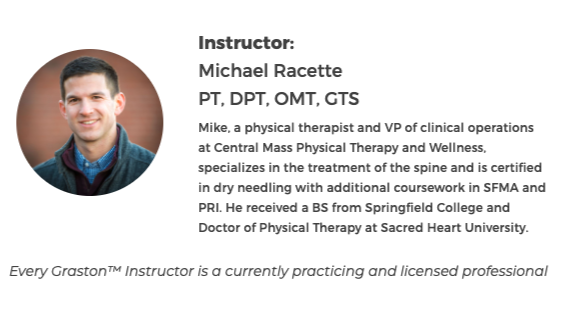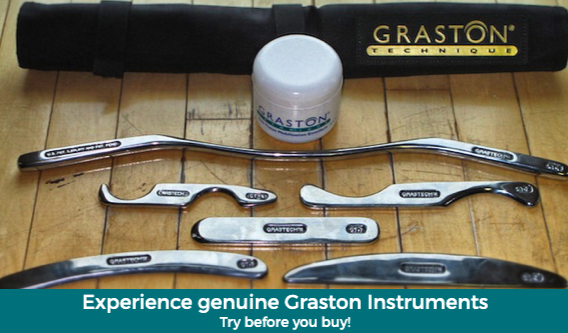Graston Technique® M1 Training Oct 12 & 13, 2019
/Graston Technique® is the standard protocol in IASTM amongst professional manual therapy clinicians.
The use of their specially designed instruments and protocol has been a recognized part of the manual therapy industry for more than 20 years. Graston Technique® has become standard protocol in many universities and outpatient facilities as well as industrial on-site treatment settings.
Graston Technique® (GT) therapy is an evidence-based form of instrument-assisted soft tissue mobilization (IASTM) that allows for precise detection and treatment of myofascial dysfunction. Following the kinetic chain, GT therapy Providers can target and specifically treat affected tissues often resolving issues once thought to be permanent utilizing specifically designed instruments.
Overview of M1 training
The primary objective of M1 is to develop an understanding of Graston Technique© therapy (GT) and how to apply it into the full spectrum of musculoskeletal treatment approaches. The course also instructs clinicians on the proper use of the instruments.
By the end of the training, you will be able to:
Demonstrate a working knowledge of the Graston Technique© brand instruments, GT treatments, potential effects, and benefits.
Identify and discuss the indications, contraindications (relative and absolute) of GT.
Review and develop a better understanding of soft tissue injury, healing and potential reactivity to instrument-assisted soft tissue mobilization (therapeutic and adverse).
Develop skill and competence in the GT application of IASTM to the major regions of soft tissue.
The Graston Technique® Training is multi-disciplinary and is available to the following licensed professionals:
Acupuncturists
Canadian Massage Therapists
Certified Hand Therapists
Certified/Licensed Athletic Trainers
Chiropractors
Dentists
Medical Physicians
Occupational Therapists
Occupational Therapist Assistants
Osteopaths
Physical Therapists/Physiotherapists
Physical Therapist Assistants
Podiatrists
Students (In the final year of one of the above programs)
U.S. Massage Therapists (see below)
Veterinarians
To see a detailed description of the course and see if you are eligible to to register, visit their website.






